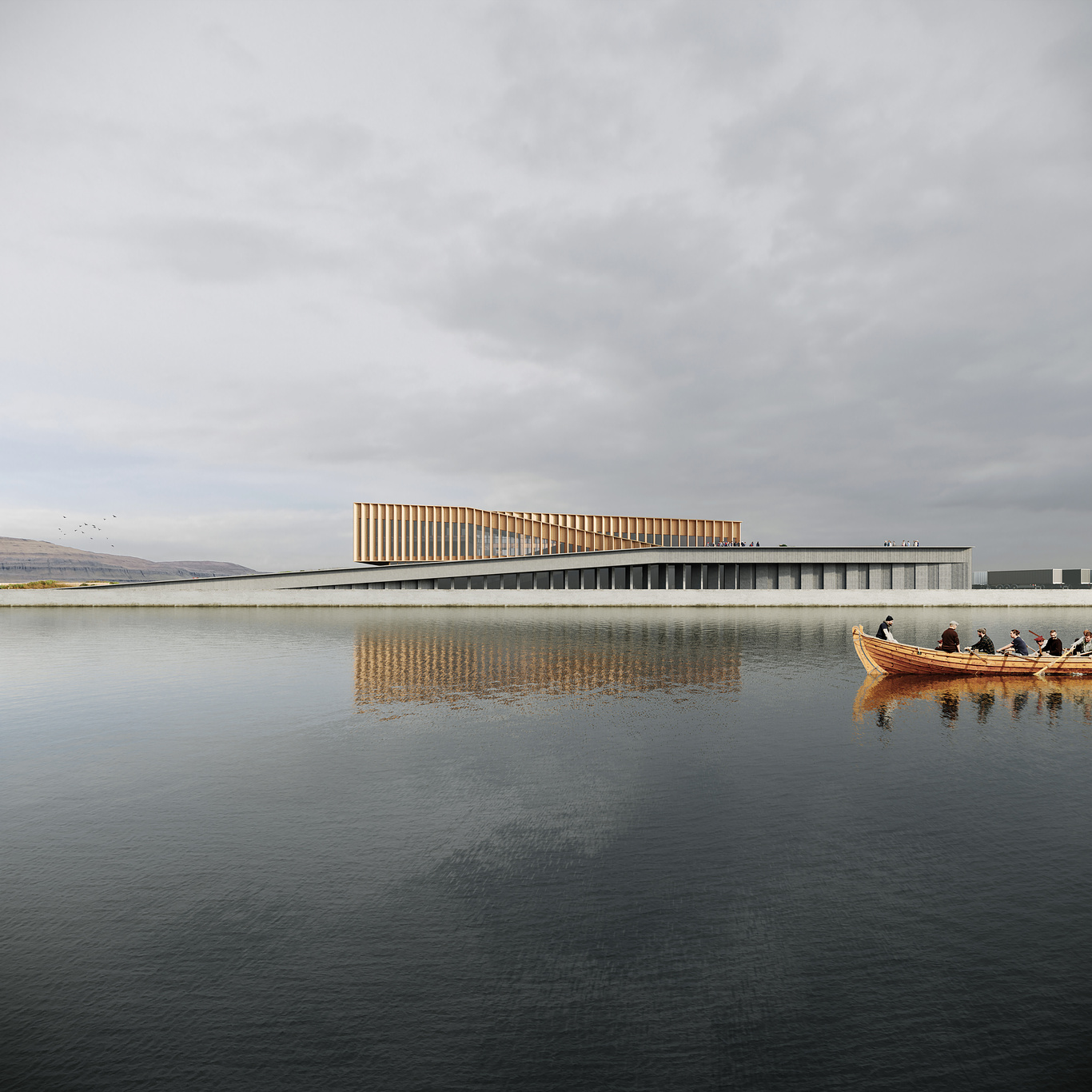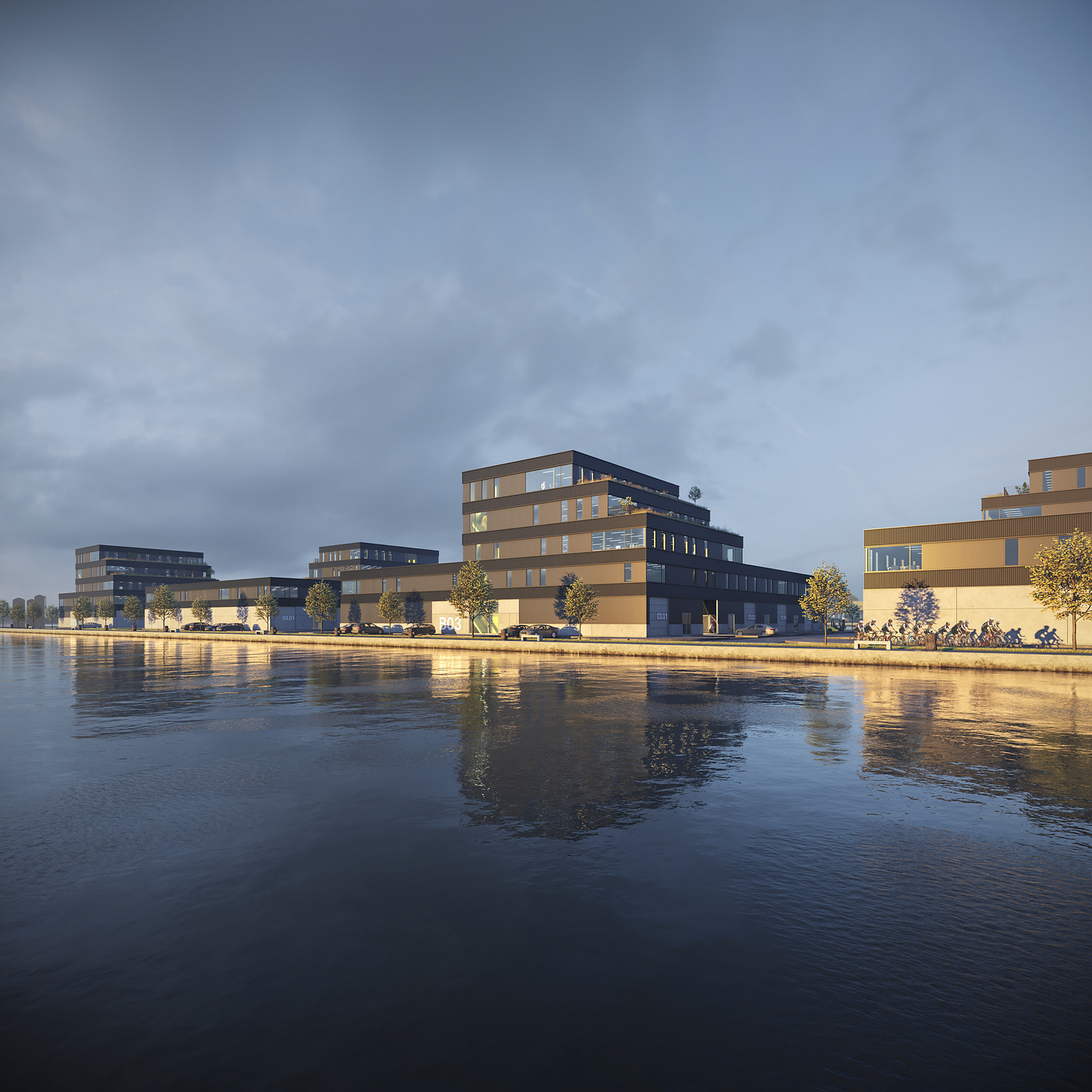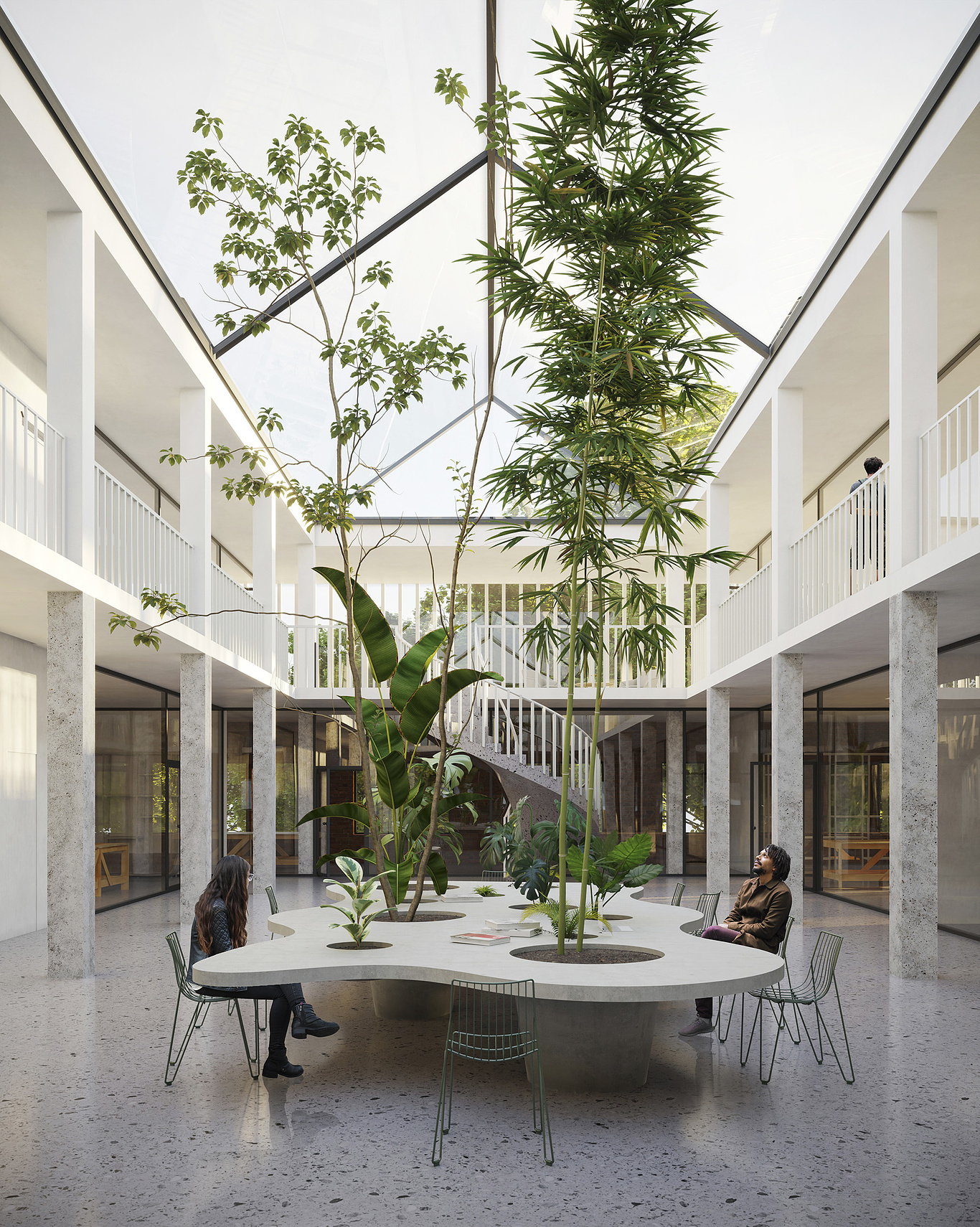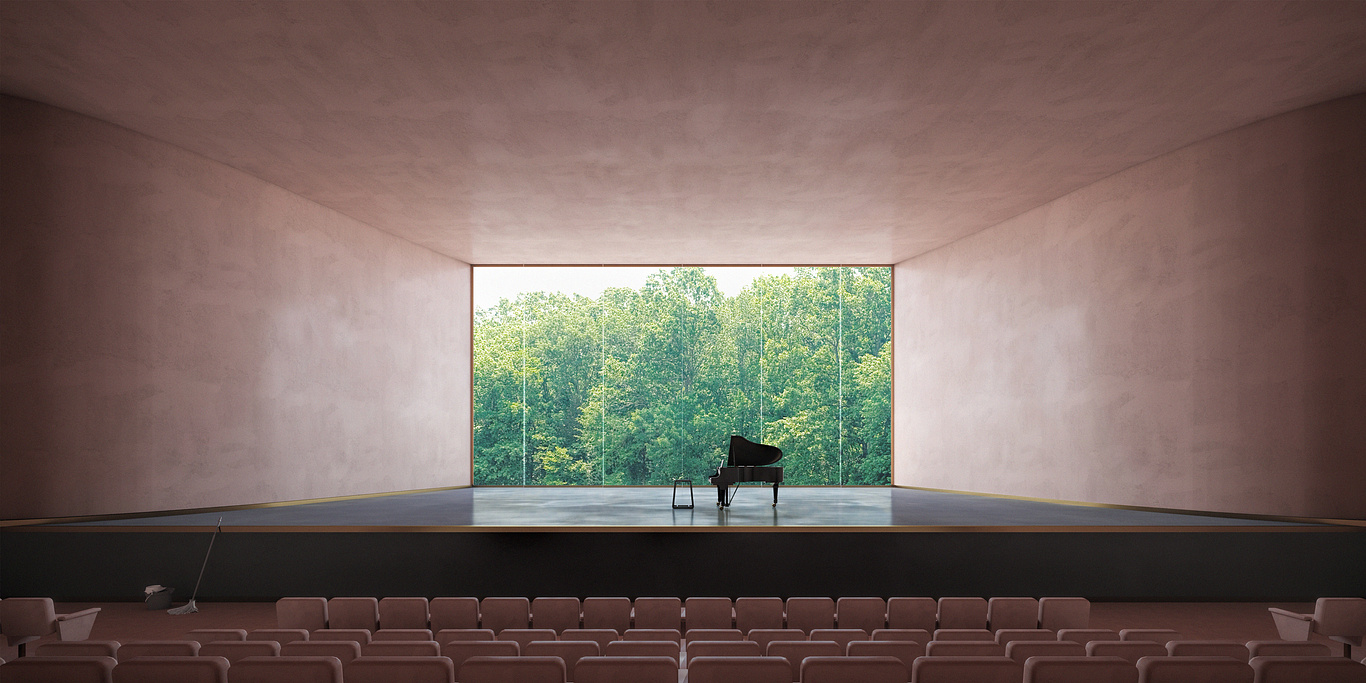
10 Questions With...
10 Questions with Element
Welcome to another installment of "10 Questions With," a feature series on CGarchitect.com where we delve into the minds and practices of the world's leading visualization studios. This week, we sit down with Element Visualizations, founded in 2014 by two architects who shared a passion for translating ideas into outstanding visual content for real estate, architecture, design and branding companies.
Element, a trailblazing company in 3D visualization and digital experiences, is redefining how we interact with the digital world. With a focus on creating immersive and interactive 3D environments, Element leverages cutting-edge technology to bring architectural designs and concepts to life in ways that were previously unimaginable.
Element, a trailblazing company in 3D visualization and digital experiences, is redefining how we interact with the digital world. With a focus on creating immersive and interactive 3D environments, Element leverages cutting-edge technology to bring architectural designs and concepts to life in ways that were previously unimaginable.
1. What inspired the name "Element" for your studio?
Every material and the reality surrounding us is composed of atoms and chemical particles, forming the appropriate elements. When exploring environments, materials and textures of objects, we focus on these smallest details to recreate them in our renders as perfectly as possible.
Additionally, as an architectural visualization studio, we collaborate closely with architects or developers. During this process, we integrate ourselves into our clients' teams. We believe that we are the missing element that helps them achieve their goals, whether it is winning a competition or persuading investors.
2. How did the studio get its start, and what was the vision behind its inception?
Additionally, as an architectural visualization studio, we collaborate closely with architects or developers. During this process, we integrate ourselves into our clients' teams. We believe that we are the missing element that helps them achieve their goals, whether it is winning a competition or persuading investors.
2. How did the studio get its start, and what was the vision behind its inception?
While working for some renowned Dutch architecture studios shortly after graduating, we realized the importance of visualization in validating design concepts. We proved pretty good at it and continued to develop our 3D skills back home.
Our visualizations continued to improve and gather great client feedback. Soon we learned that working with visuals was deepening our understanding of architecture. This is how we began to slowly transition from traditional architecture and made the decision to open a visualization studio. Starting our own venture felt like a natural step, driven by a need for independence and a commitment to enhancing architectural projects through visualization. This journey has enabled us not only to offer impactful visualizations, but to guide clients in their projects, and evolve as architects.
Our visualizations continued to improve and gather great client feedback. Soon we learned that working with visuals was deepening our understanding of architecture. This is how we began to slowly transition from traditional architecture and made the decision to open a visualization studio. Starting our own venture felt like a natural step, driven by a need for independence and a commitment to enhancing architectural projects through visualization. This journey has enabled us not only to offer impactful visualizations, but to guide clients in their projects, and evolve as architects.
3. How do you approach blending reality and imagination in your visualizations?
Our daily routine involves immersing ourselves in architectural portals, exploring new projects and innovative solutions, searching for knowledge and inspiration that we can later apply to our work. Through this regular engagement with architectural content, we feed our passion for architecture and develop a deeper understanding of the discipline. This, in turn, significantly enhances the quality of our renders.
In addition to our focus on architecture, we spend a lot of time analyzing photography. By deconstructing particular photographs, we learn to understand their underlying elements such as composition, lighting, and mood. This approach sharpens our visual skills and helps tremendously with creativity. Over the years, these two practices have combined to enhance our ability to produce powerful visualizations.
4. What are the key challenges in architectural visualization today?
In addition to our focus on architecture, we spend a lot of time analyzing photography. By deconstructing particular photographs, we learn to understand their underlying elements such as composition, lighting, and mood. This approach sharpens our visual skills and helps tremendously with creativity. Over the years, these two practices have combined to enhance our ability to produce powerful visualizations.
4. What are the key challenges in architectural visualization today?
In today's fast-paced world, where attention is scarce and time is precious, creating a visually stunning yet impactful visualization is really hard. Every image we craft carries a specific message. We must swiftly identify our audience, determine our core values, strategize the best delivery method, and then create a compelling image. Mastering these steps is crucial, as the first impression often determines the project's success.
Addressing the diverse needs of multiple target groups and clients poses another challenge. For instance, an architect seeks utmost precision in presenting their project, while an investor prioritizes profit maximization. Simultaneously, the marketing firm aims to engage the target audience, and visualizers strive to produce aesthetically pleasing images. Balancing these interests is as far from straightforward as you can imagine. Merely possessing artistic talent isn't enough. You have to be a skilled advisor and understand the needs of different parties.
Another challenge is the constant need to improve. The rapid changes in technology and new solutions don’t give you much of a choice. You simply need to stay up to date.
Addressing the diverse needs of multiple target groups and clients poses another challenge. For instance, an architect seeks utmost precision in presenting their project, while an investor prioritizes profit maximization. Simultaneously, the marketing firm aims to engage the target audience, and visualizers strive to produce aesthetically pleasing images. Balancing these interests is as far from straightforward as you can imagine. Merely possessing artistic talent isn't enough. You have to be a skilled advisor and understand the needs of different parties.
Another challenge is the constant need to improve. The rapid changes in technology and new solutions don’t give you much of a choice. You simply need to stay up to date.
5. Can you walk us through your creative process for a typical project?
Our creative process is like mixing a good cocktail – it's all about the right ingredients.
We start by digging deep into the project's needs – its requirements, intended audience, purpose, and desired impact. Open communication with our clients is a cornerstone of our workflow, as we need to be on the same page when it comes to their goals and expectations.
Another important step is to gather relevant information and inspiration. This may involve studying architectural plans, design briefs, mood boards, and reference images, as well as researching target audience and market trends.
Once we have a solid foundation, we start to conceptualize and develop the artistic vision for the project. This phase involves brainstorming ideas, sketching rough drafts, and experimenting with various design elements and compositions. We search for the balance between accuracy and expression. We want to convey the project's essence while at the same time captivate viewers with quality aesthetics.
Finally, we execute the project, paying attention to the smallest detail. From lighting and textures to scale and perspective, every aspect of the visualization is carefully crafted. As for the technologies, we believe in the: “Do whatever it takes in order to achieve desired effect”.
6. How has technology changed the landscape of architectural visualization?
We start by digging deep into the project's needs – its requirements, intended audience, purpose, and desired impact. Open communication with our clients is a cornerstone of our workflow, as we need to be on the same page when it comes to their goals and expectations.
Another important step is to gather relevant information and inspiration. This may involve studying architectural plans, design briefs, mood boards, and reference images, as well as researching target audience and market trends.
Once we have a solid foundation, we start to conceptualize and develop the artistic vision for the project. This phase involves brainstorming ideas, sketching rough drafts, and experimenting with various design elements and compositions. We search for the balance between accuracy and expression. We want to convey the project's essence while at the same time captivate viewers with quality aesthetics.
Finally, we execute the project, paying attention to the smallest detail. From lighting and textures to scale and perspective, every aspect of the visualization is carefully crafted. As for the technologies, we believe in the: “Do whatever it takes in order to achieve desired effect”.
6. How has technology changed the landscape of architectural visualization?
Recent technology advancements, particularly AI, has beyond any doubt revolutionized our profession and will continue to do so in the upcoming years.
Leveraging AI tools accelerates workflows and enhances efficiency on a remarkable scale. Tasks that were once time-consuming are now completed in seconds. Creating textures, modifying, cleaning and upscaling photos are just a few examples here. This shift allows professionals to focus more on quality, unlocking new possibilities and raising the standard of work in the industry.
Yet architectural projects pose challenges too complex for artificial intelligence to generate precise visuals independently. Right now, AI serves mainly as a rendering engine, enabling quick creation of visually appealing images that may serve as inspiration. Let’s see where it will lead us.
7. Could you share insights on a particularly challenging or unique project?
Leveraging AI tools accelerates workflows and enhances efficiency on a remarkable scale. Tasks that were once time-consuming are now completed in seconds. Creating textures, modifying, cleaning and upscaling photos are just a few examples here. This shift allows professionals to focus more on quality, unlocking new possibilities and raising the standard of work in the industry.
Yet architectural projects pose challenges too complex for artificial intelligence to generate precise visuals independently. Right now, AI serves mainly as a rendering engine, enabling quick creation of visually appealing images that may serve as inspiration. Let’s see where it will lead us.
7. Could you share insights on a particularly challenging or unique project?
As a boutique studio, ELEMENT faces its greatest challenge with large-scale projects. While we prioritize the quality and uniqueness of our visuals, we excel in small to medium-scale endeavors. Large projects, encompassing extensive premises and infrastructure, pose issues of control over our produced materials. The bigger the project, the more time is needed for optimizing models and inserting different elements, leaving limited room for aesthetics and art direction.
Our commitment to quality goes beyond meeting client requests; we do our best to embed each project with a distinctive character, often requiring more time than initially planned. While some clients may not expect this approach, we believe our success stems from going beyond mere client demands. We are sought out not just for our deliverables but for our problem-solving expertise and dedication to excellence.
Our commitment to quality goes beyond meeting client requests; we do our best to embed each project with a distinctive character, often requiring more time than initially planned. While some clients may not expect this approach, we believe our success stems from going beyond mere client demands. We are sought out not just for our deliverables but for our problem-solving expertise and dedication to excellence.
8. What are the future trends you foresee in this industry?
Recently, everyone has been paying strong attention to AI. But artificial intelligence is not a future trend, it's a tool that will perhaps influence some of them.
Still image renaissance is definitely among the trends that we think are worth paying attention to. Thanks to the rapid development of software, the quality and availability of libraries, and ultimately the possibilities offered by AI -visualizations are entering a whole new level of quality and realism. Competition will certainly intensify in this area.
Another one is the development of proprietary software. There are plenty of companies on the market that specialize solely on particular visualizations like product or automotive, creating proprietary software for their daily work. Their inventive solutions and targeted optimizations are often impressive. As a result, our industry is likely to further fragment into more specialized and smaller segments in the upcoming future.
And last but not least, VR will definitely become more popular due to technological development and its availability.
9. How do you ensure client satisfaction and manage expectations in such a detail-oriented field?
9. How do you ensure client satisfaction and manage expectations in such a detail-oriented field?
It’s a good question that we have asked ourselves many times before. And since we didn't want to make assumptions, we decided to conduct a series of interviews with our customers.
What we noticed was that, for the sake of good cooperation, we need to educate our customers first. Clients need to understand the process behind creating visualizations and the fact that the final result of our work largely depends on the brief and the material we get. Their input is just as important as ours and the more specific they are the more tailored the images.
By definition, we require a lot from our clients. Not everyone likes it, of course, but this filter allows us to establish cooperation with a very conscious clientele. This strategy ultimately reflects in the renders we proudly associate with our company's brand.
10. Lastly, where do you see ELEMENT in the next 5 years, and what are your goals for the studio's future?
10. Lastly, where do you see ELEMENT in the next 5 years, and what are your goals for the studio's future?
We have an exciting project on the horizon: the World Visualization Festival in Warsaw this October, which ELEMENT is helping to organize. This event promises to be the largest gathering in our industry, bringing together 3D artists, architects, and technology firms. Right now, our attention and efforts are fully dedicated to this event. Stay tuned for more details, and consider this your invitation to join us in Warsaw this October.
But diving deeper into the future, we're currently taking steps to ensure our studio grows sustainably, on our own terms and principles, allowing us to maintain the best client portfolio while also preserving a balance between work and personal life. We're forging important partnerships, expanding our team with specialists in animation and VR, and doing everything to stay updated with new technologies. Our goal is for ELEMENT to evolve towards a comprehensive art direction company for real estate projects, with visualizations still being at the core of what we do.

ELEMENT VISUALIZATIONS
Creating something new that does not physically exist is one of the most thrilling feelings in our work
You must be logged in to post a comment. Login here.
About this article
Welcome to another installment of "10 Questions With," a feature series on CGarchitect.com where we delve into the minds and practices of the world's leading visualization studios. This week, we sit down with Element Visualizations, founded in 2014 by two architects who shared a passion for translating ideas into outstanding visual content for real estate, architecture, design and branding companies.
visibility403
favorite_border1
mode_comment0



















